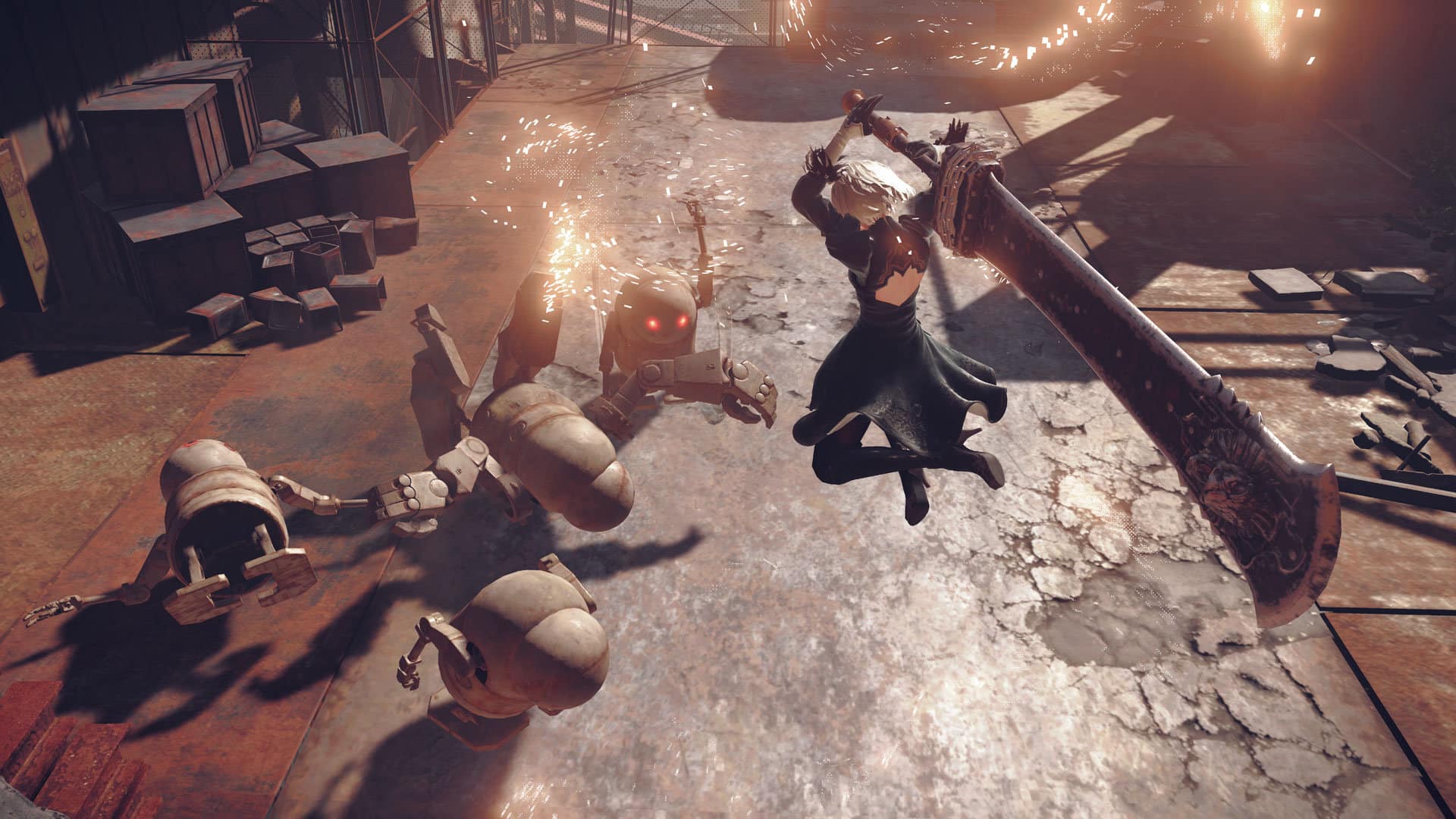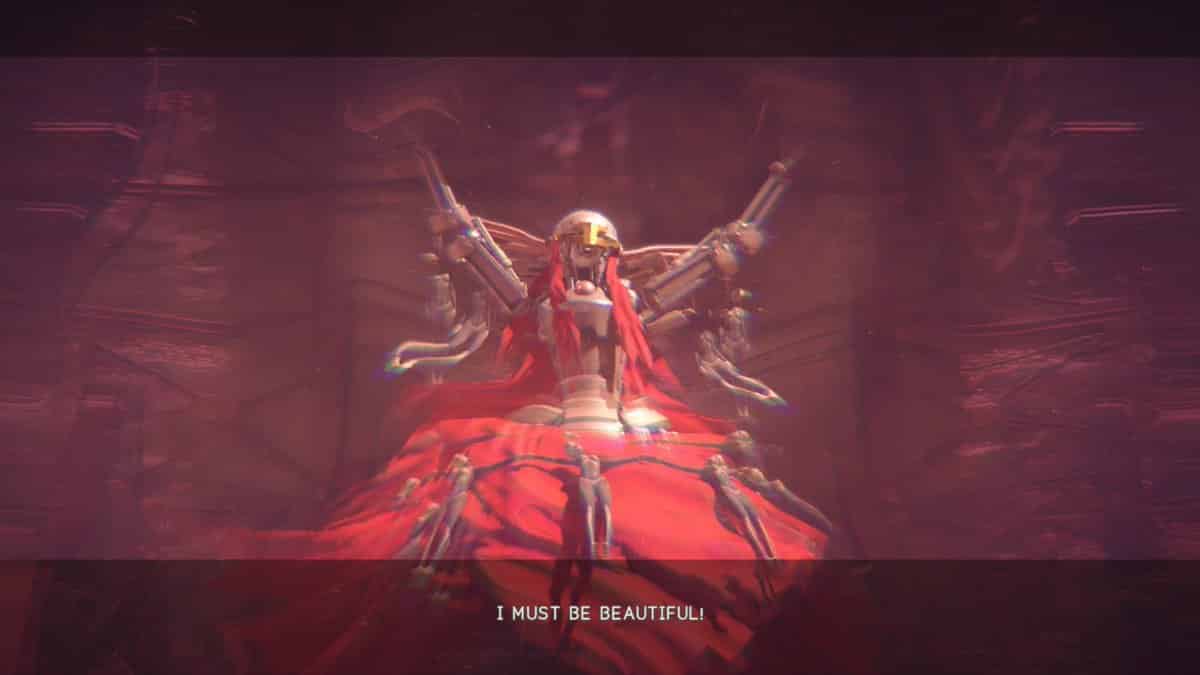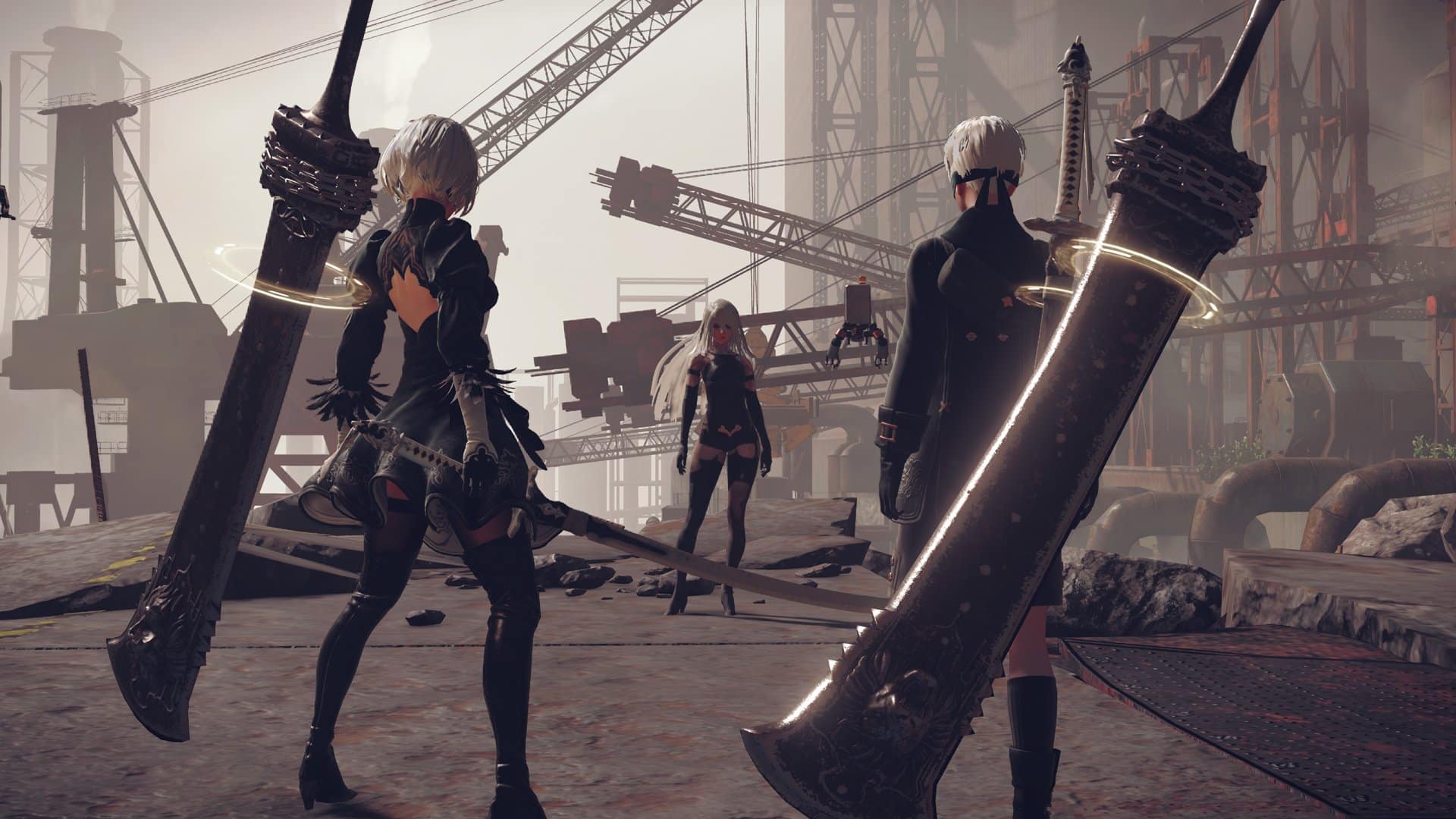NieR: Automata Challenges Our Ideas of Morality with Its Character Design
Big, boisterous cannons. Pivoting mechanic joints. Sockets that can start in and out advanced weaponry, oversized guns, and titanium katanas. These are the blood and guts of NieR: Automata's mechanical lifeforms. When pictured as individual pieces, as strewn together parts, they produce a menacing image: a machine designed for battle. He is deconstructable, modular. He can never really decease, because his variety meat become the middle and lungs of the next humorous simple machine.
The magic of NieR, all the same, is that these figures aren't putting to death machines at all. Sure, the story seems like characteristic good versus evil and state of war between humanistic androids and alien machines, but the game swiftly subverts all expectations. The secret to its murder lies in the character design.
For the unacquainted, a little summary―NieR is a game about machines. They are split up into two defined categories: the androids and the machine lifeforms. The androids were created aside the human race to fight the aliens; the automobile lifeforms were created by the aliens to fight the human race. The two mecha races competitiveness a proxy war on their creators' behalves, duking it out on a spoilt Earth.
The alien-bred automobile lifeforms are sturdy, simple structures with few joints and thin, mechanical limbs. Director Yoko Taro's demands informed this minimalist conception; he insisted that the machines' bodies should not bend connected more than two axes.
This single design trait brings a cohesiveness to the automobile lifeforms. They feel expendable, un-evolved. It makes them appear like a sub-species of mecha, completely foreign and barbaric to the human being-like androids. With their smooth curves and bewitching silhouettes, the androids see themselves American Samoa the natural disciples of humans, and the simple machine lifeforms as the ugly foil to their perfect form.

NieR's character figure plays on the natural biases of the histrion here and reinforces them through and through the beliefs of the androids. Like NieR: Automata's predecessor, NieR Replicant, every new close leave discover humanity in the monsters — and make monsters out of humanity.
Hisayoshi Kijima, NieR: Automata's mecha designer, designed all variation of car to specifically convey this twofold perspective. How do you design characters that must simultaneously be able to be seen Eastern Samoa dear and evil? As the game progresses, the player slowly gains new ways to see to each one machine, to grapple with its visual aspect and capabilities. NieR constantly challenges the role player to see further into each graphic symbol, to go out beyond the game's initial premise. Information technology asks: What if the machines used their ragged parts to create a baby stroller, non a submachine gun? What if their violence was simply an pick, not an inborn requirement?
The player's first exposure to this idea occurs when she comes upon an amusement park populated by not-ferocious machine lifeforms. The protagonist is super skeptical of their nonviolence and is asked many times by her companion to perplex rid of them, just just in case they return to their barbaric nature. The machine lifeforms are still equipt with machine guns, but those machine guns are furiously shooting confetti, not bullets. You see your enemies walk around in their usual, homogeneous shock, but instead of blankly looking for an android unit to kill, they are falling in step to a dance recital.
One of the game's most outstanding bosses is Simone, a mechanic caricature of Beauvoir, an existentialist. She is the cherry along top of this pleasure ground spirit level, equal parts horrifying and contemptible, and a notable divergence physically from the usual machine lifeform. She has a feminine face made of an iron helmet, a dead isoceles crown fringed with the hanging bodies of two androids. She wears a voluminous ruddy line up and bellows in opera atomic number 3 she slashes at the thespian. She is altogether an several, albeit instant and vengeful. In a rush along without gender, she is proudly feminine, crying unsuccessful in grief-stricken Eastern Samoa a spurned lover.

This design shows U.S. what rear be through with shapes on two axes and simple, modular beings. Information technology has exploited arm parts to make articulatio humeri pads, argentiferous plates to craft a Straight-laced gown. In all ways, Simone is attempting to turn down her prescription as a state of war bot. Only when pushed to the limit must she expose the all but robotic parts of herself. She keeps her spider-corresponding legs invisible under her plated enclothe until she is fully undefendable. She could a lot more easily defeat the androids away using her chock-full arsenal of limbs, but she refuses to. To Simone, it is beauty over occasion.
Simone is not the exclusive automobile whose innovation subverts expectations in NieR: Automata. The androids too feature deviant purpose choices. Examining the design of 2B, our android protagonist, the eye is quickly drawn to her most distinguishing trait ― her black blindfold. This is an accessory she shares with all of her fellow ground units, the grunts of the android resistance. With her compatriots, she shares blindness, an inability to see the greater picture. Black and white visual sensation, good versus evil. This tunnel vision carries over to the eyes of the player, who is shackled by 2B's limited perspective of the war.
These small but philosophically loaded visual details are a critical part of all android design, spanning their social power structure. Above the land grunts are the operators. The operators send and moderate information distributed to the ground units. Just put, they control the narrative. Yet rather of a blindfold, the operators wear face veils. They bottom run into the large moving picture, but they are physically barred from telling it. And at the apical of this pyramid is the commander, WHO wears neither blindfold nor veil, all-seeing and wise.

Blinds and veils aside, the almost obvious piece of sensory system design trickery involves the androids' figure. After a few playthroughs, it becomes obvious that the androids' beaut is purely superficial. We begin to question what exactly makes them some varied than their simplistic counterparts. A tight waistline? A larger mental lexicon? Neither putative advantage makes them to a greater extent virtuous.
The ultimate subject matter of NieR: Automata's character design is that our own preconceived notions of beauty, intellect, and ethics get in the way of our sight. When we decide that those traits have a face, a look, a style, we decide which lifeforms deserve empathy, which lifeforms are prone to violence, and which simply manipulation it As a means to an final stage.
When the brave forces us to toss away these ideas, we finally achieve a full reckon of NieR: Automata's cast. The participant gradually gains an understanding that seemingly subservient machine lifeforms are actually capable of individuality and self-determinism. Reexamining NieR: Automata's first main boss, Engels, you can see that this terrifying monster of machinery is in reality just one important construction site.
Every bit Kijima put it, "he uses cranes to hook up his personal arms — he's construction equipment, and what he's edifice is himself." He is like whatever other machine wandering war-torn earth, seeking safety device from harm and the right to someone-determine. Kijima makes IT distinct — on that point is no more moral superiority here. There are only peacemakers and warbringers. As Kijima's designs masterfully exhibit, whether the violence is dealt away a simple machine in black stockings or in a makeshift steel dress, information technology is violence nonetheless — and there's zipp beautiful nearly it.
https://www.escapistmagazine.com/nier-automata-art-design-philosophy-androids-machine-lifeforms/
Source: https://www.escapistmagazine.com/nier-automata-art-design-philosophy-androids-machine-lifeforms/
0 Response to "NieR: Automata Challenges Our Ideas of Morality with Its Character Design"
Post a Comment